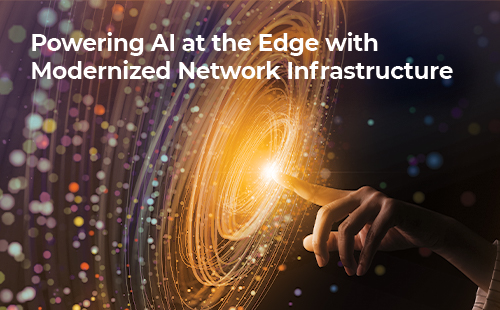Welcome to RUCKUS Networks, part of CommScope's world-leading portfolio of networking solutions. Learn more.
Have you ever been tasked to plan for that all-important family vacation where you must come up with that perfect shortest route through all 12 destinations without, of course, having to pass through the same place again? If you are struggling with that right now, don’t despair. You are not alone because this has been a fairly serious mathematical endeavor since the 19th century, more famously known as the Travelling Salesman Problem.
You might be wondering why would such a seemingly dead simple task be so complicated that Victorian era mathematicians had to get involved? The simple answer is that each destination is most likely connected to many other destinations at various distances. At this point, you probably have a mental picture of your 12 favorite places in the world interconnected by a spiderweb of air, sea, or land links. It is now clear that the selection of the shortest route through all 12 destinations, with no repetition, is non-trivial because there are just so many possible routes to choose from. Choosing a route with no repetition is difficult enough, let alone the shortest route.
Let us generalize this problem so that we can get back to the topic here. Replace your 12 favorite places with 12 small circles (or nodes), and the air/sea/land links between the places with simple lines. This, ladies, and gentlemen, is what mathematicians call a Graph!
A Wi-Fi® Network is a Graph
Now, think about all the Wi-Fi access points (AP) deployed in your enterprise campus. If two APs are within the radio frequency (RF) propagation range of each other, draw a line (or link) between them. This represents the RF topology graph, and straightaway we recognize that a link between two APs indicate that there is a possibility of interference between them if they are to operate on the same channel. For many wireless professionals, this graphical representation should be extremely intuitive, as this will be how they think about the Wi-Fi deployment whenever they need to optimize and troubleshoot their network.
So, what is the big deal about this RF topology graph representation? The key here is that by representing a Wi-Fi network as a graph, it gives us access to the rich set of mathematical tools, techniques and algorithms that allows us to quantitatively measure and optimize the network. In the non-graphical world, we often use metrics like average, median, percentiles, etc. to measure and compare certain aspects of our networks, e.g., average traffic through an AP or 99th percentile of the local area network (LAN) latency. However, how do you measure and compare the density of APs between the boardroom and hallway? How do you find that important “bridging” AP, that sits in the middle of the greatest number of roaming paths, without which a lot of roaming down the hallway will fail? How do you even identify and analyze all the roaming paths in the first place?
Instead of relying on intuition, graph theory offers a few families of basic metrics that help us to quantitatively measure and provide answers to many questions like the ones above:
- Centrality metrics: Assess the importance of individual APs in a network based on various definitions, e.g., the AP which sees the most interference, or the AP that sits in the middle of the greatest number of roaming paths.
- Integration metrics: Measure how APs interconnect with one another, e.g., helping us to identify roaming paths throughout the network.
- Segregation metrics: Quantify the presence of clusters, e.g., identifying areas of the deployment with differing AP densities.
- Resilience metrics: Measure the ability of the network to maintain connectivity when there are AP failures in the deployment, e.g., determine the areas with potential coverage holes.
Solving Networking Problems with Graph AI
This ability to quantify a Wi-Fi network as a graph allows us access to the world of graph data science, with algorithms and mathematical tools which are more apt to solve the problems in Wi-Fi networks, compared to some of the more conventional machine learning techniques. In RUCKUS, we have been leveraging on the power of graph data science, and recently launched the AI-Driven Cloud Radio Resource Management (RRM). This feature solves one of the oldest problems in wireless communications – how do we jointly optimize the channel plan and channel bandwidth to minimize the co-channel interference, but at the same time, maximize the channel bandwidth as much as possible?
AI-Driven Cloud RRM constantly learns the RF environment of the network through the neighboring AP SNR reported by every AP on a regular basis and constructs the RF topology graph. Our patent-pending graph algorithm taps mathematical principles such as centrality, famously relied on by Google’s PageRank, to cleverly select the best channel plan to minimize the co-channel interference in a computationally efficient iterative manner, while ensuring that in areas where the AP density allows, the channel bandwidth is bumped up as much as possible. When a better joint channel plan and bandwidth is found, an AI Recommendation will automatically alert the user, and with a click of button, the new set of optimal configurations will be pushed to all the APs in the network. And of course, our Graph AI never sleeps, and this optimization cycle runs 24/7.
This ability to optimize the most fundamental radio resources of channels and bandwidth is becoming increasingly critical as we herald an exciting new era for Wi-Fi with 6GHz and Automated Frequency Coordination (AFC). With up to 59 non-overlapping channels, 5 channel bandwidth options and the availability of both lower power and standard power modes, the complexity of RRM optimization will explode exponentially. The conventional methods relying on scanning the spectrum and avoiding interference will be too slow, inefficient, and most likely sub-optimal. Intuition and gut feel will get lost very quickly in the sheer number of permutations available. Graph AI, borrowing the famous phrase from Princess Leia, is our only hope.
Back to your vacation planning. If you are still struggling with the perfect shortest route, relax, and perhaps it’s not necessary after all because sometimes the journey is more beautiful than the destination. Regardless, stay tuned as we will share more about the applications of graph data science to networking problems in our future blogs.













